A Beginner’s Guide to Seasonal Thai Fruits
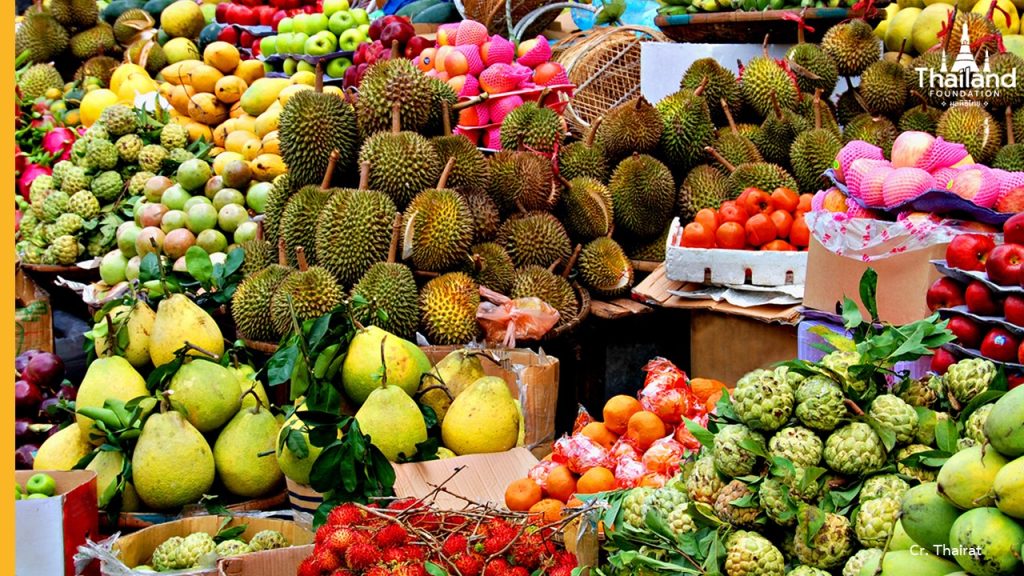
When visiting Thailand, you often witness a variety of fruits that dazzles your appetite. As a fruit-abundant country, Thai people have fruits to consume all year-round. Oftentimes, however, we eat fruits according to the seasons. There are fruits that grow year-round but are perceived to be particularly delicious at a specific time of the year. Some trees yield more fruits in that particular season than others, while specific fruits only grow in certain seasons. In this article, I will introduce you to popular fruits for different seasons and in which region or province these fruits are known.
Fruit Farming – A Local Wisdom
Located in the heart of Southeast Asia, Thailand is divided into 6 geographic regions: North, Northeast, Central, East, West, and South (this is not to be confused with the 4 cultural regions of North, Northeast, Central, and South). Each region of Thailand has not only different landscapes but also varying natural resources, cultural patterns, and traditions.
The central region, which is primarily plain and flat, is known as the “heartlands,” where the majority of rice farming occurs. The Northern and Western regions are mountainous with steep valleys. They are able to conduct various agriculture, including wet-rice farming. Situated near the Gulf of Thailand, the Eastern region is good at cultivating different fruits. The Southern part, which has a very distinct geography compared to the rest of Thailand, relies on rubber and palm plantations. Unlike other regions, the Northeast of Thailand does not possess high-quality soils. However, produce like sticky rice, and cash crops such as sugar cane or manioc are widely cultivated in this region.
Due to geographical differences, each region has slightly different weather. Therefore, farmers in different regions developed agricultural practices suited to their geography and take advantage of the perks provided by Mother Nature. This led them to experiment with different crops, including fruits, until they found ones suitable for their home. Then, they started perfecting the fruits through selective breeding and experimenting with different growing methods. This eventually lead to local varieties of fruit as well as agricultural knowledge passed down from generation to generation.
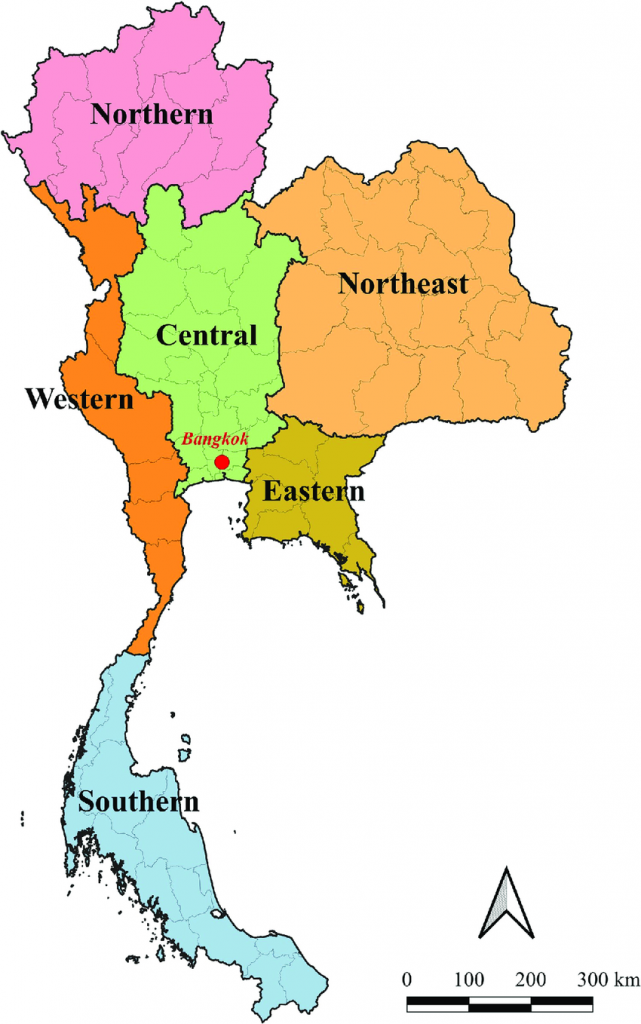
(Photo Credit: ResearchGate)
Enjoying Fruits – A Thai Way of Life
As mentioned, though many fruits are available year-round in Thailand, many Thais will tell you that fruits are seasonal and are influenced by the monsoon. Therefore, Thais look forward to various fruits deemed to have the best quality during each time of the year. But the fruity side of the Thai way of life extends beyond consumption of nature’s bounty: it also involves farming practice, culinary creations, and even preservation methods.
The fruit farming process occurs in synch with specific timing in the calendar. Farmers begin early with preparations for planting. This includes the storing, and in some case, conditioning of seeds. For non-herbaceous plants, this process may include preparing for right conditions for trees to bear fruit, such as removing pest or controlling water/sunlight.
As the plant bears fruit, farmers must employ various methods to keep away pest and maintain right amount of water and sunlight. Miscalculations can lead to fruits becoming blemished or even spoiled. The fruits are picked at a precise time and delivered to markets/grocery stores/customers. This is done in sync with time to ensure the fruit comes to consumers at the right moment of ripeness.
When in the hands of customers, fruits may be consumed in their natural forms. Many Thais, however, also turn fruits into a variety of seasonal menus. Most of these specialty dishes come in the form of desserts, due to the fruits natural sweetness and tartness. One of the most famous seasonal dessert is perhaps mango sticky rice. Though this popular treat is available year-round, it is consumed as a specialty during mango’s peak season. One the side of savory menus, we have fruits such as Lithocarpus ceriferus, or ma kor in Thai, which is an olive-like fruit that is consumed with fried fish and sticky rice in Northern Thailand around August to September.
When the season is over, the leftover fruits are preserved as different produces that Thais can enjoy throughout the year. There are different ways of preservation, such as (a) fruit preserves, (b) dried fruits, and (c) pickling.
(a) Fruit preserves are usually made out of seasonal ripe fruits, such as durian, mango, banana, pumpkin, and jujube. Preservation is achieved by cooking these fruits with sugar and water, or sugar and coconut milk. Fruit preserves can also be adapted into other treats, such as fruit leathers and fillings for desserts. Fruits that are popular for this method include pineapple, mango, banana, and durian.
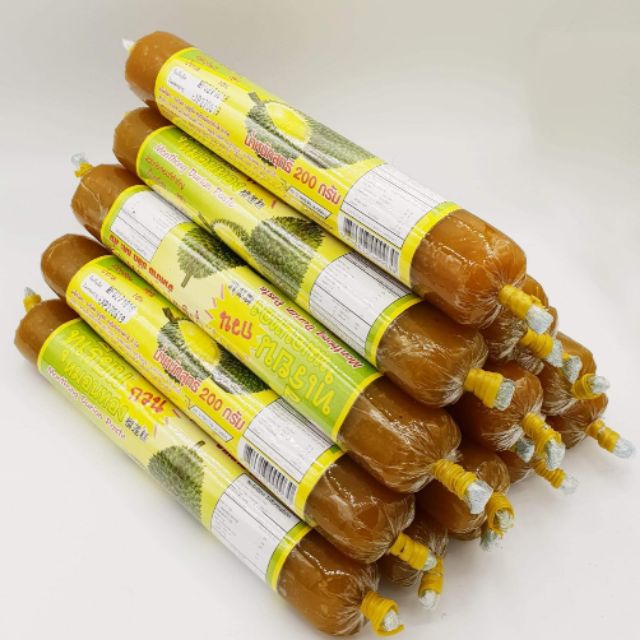
Durian preserves
(Photo Credit: nyechalat)
(b) Dried fruits are made by cutting fruits into small pieces and drying them in sunlight or in the oven until they are completely dehydrated. Fruits that are popular for this method include date plum, pineapple, mango, banana, and longan.
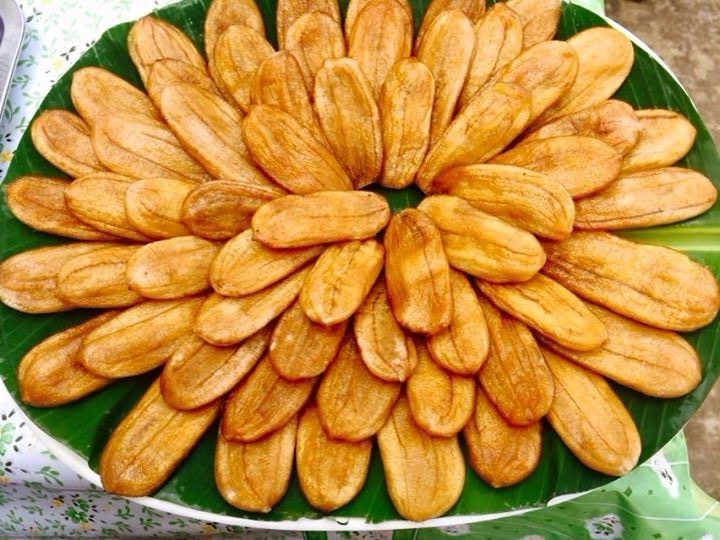
Dried Banana
(Photo Credit: technologychaoban)
(c) Pickling, in Thai-style, employ a variety of brines: salt, salt with honey or sugar, salt and lime water, etc. These different methods all depend on the fruit. For example, olives will be pickled in salt and honey, while mangoes will be pickled in salt and red lime. Other fruit favored in pickling include mango, tamarind, grape, star gooseberry, etc.
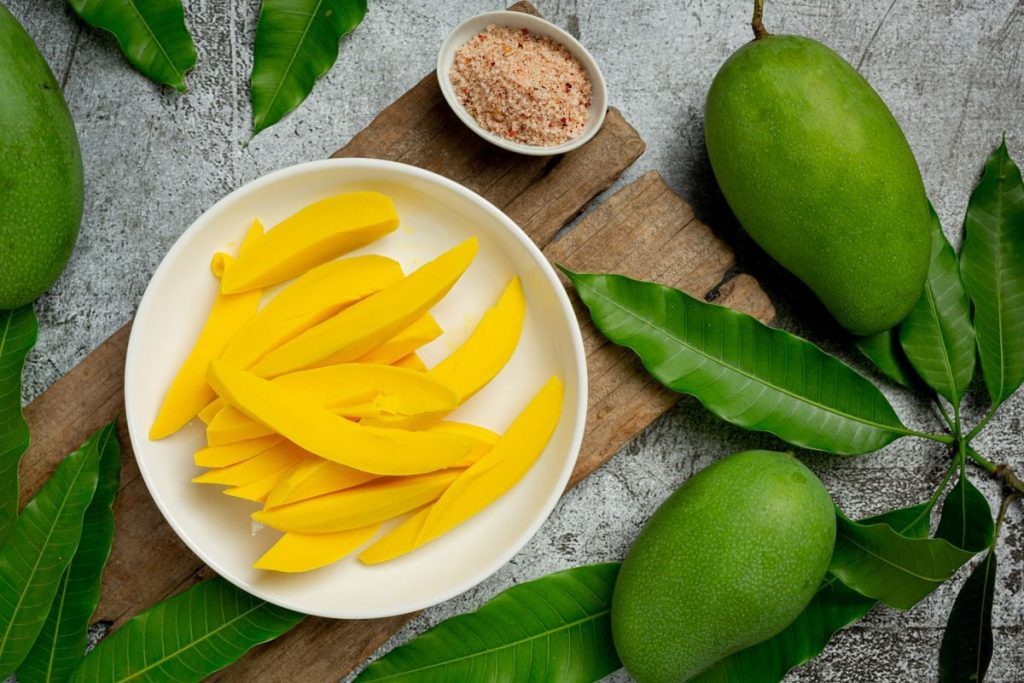
Pickled Mango
(Photo Credit: salehere)
Seasonal Fruits of Thailand
There are three seasons in Thailand: hot, rainy, and cold. Fruits grow in sync with these seasons, allowing Thais to look forward to something delicious each time of the year! Furthermore, Thai traditional medicine considers fruits as a form of “food as medicine”. Thus, fruits can be consumed to combat negative effects of each season. Here is a guide to some popular fruits in each season:
Hot Season (Mid-February – mid-May)
- Durian (ทุเรียน)
Durian, known as the King of Fruit, usually has its peak harvest in May. Even though you might not have seen one, you cannot simply miss it due its spiky exterior and intense smell. You may be surprised to hack through the hard, spiky shell with a big knife only to find soft yellow flesh on the inside with a rich creamy texture and an even more indulgent flavor. Thai durian is well-known for its balanced texture, not too hard and not too soft. The taste is indulgently sweet, with a hint of nuttiness. The scent of Thai durian varieties also help distinguishes from other varieties. Though Thai durian still possesses the iconic funky smell, generally speaking, the odor is less pungent and more aromatic (according to some fans).
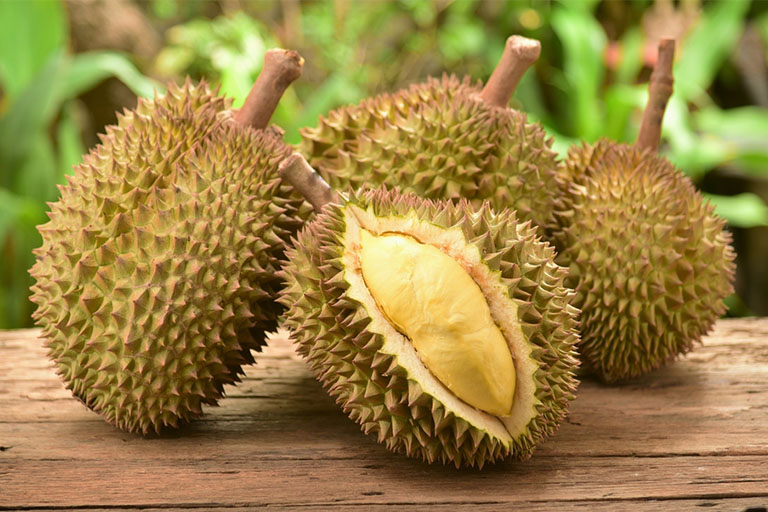
(Photo Credit: prachachat)
- Mango (มะม่วง)
Mango season in Thailand runs from late March to July as mangoes grow well in the heat. As an iconic tropical fruit known around the world, mangoes are a staple part of Thai cuisine, as a large variety of Thai dishes and snacks are made with mangoes as the star ingredient. Thai mango varieties are consumed both ripe and unripe. When consumed ripe, Thai mangoes are distinctive in their silky-smooth flesh, floral scent, and highly sweet taste. Popular “sweet” varieties include nam dok mai, mahachanok, and chok anan. When consumed unripe, the mangoes possess a crispy texture and refreshingly sour taste. The most popular “sour” mango variety is khiew sawoey. Dessert dishes, like the famous mango sticky rice, use ripe sweet mangoes, whereas appetizers and entrées, like mango salad and mango with fish sauce, use unripe sour mangoes. There is also another way to eat Thai mangoes: when it is in the stage between unripeness and ripeness. Thais call these mangoes “mamuang man (มะม่วงมัน)” or “nutty mangoes”. As the name suggests, these mangoes possess a “nutty” flavor, with balanced soft-hard texture and sweet-sour touch.
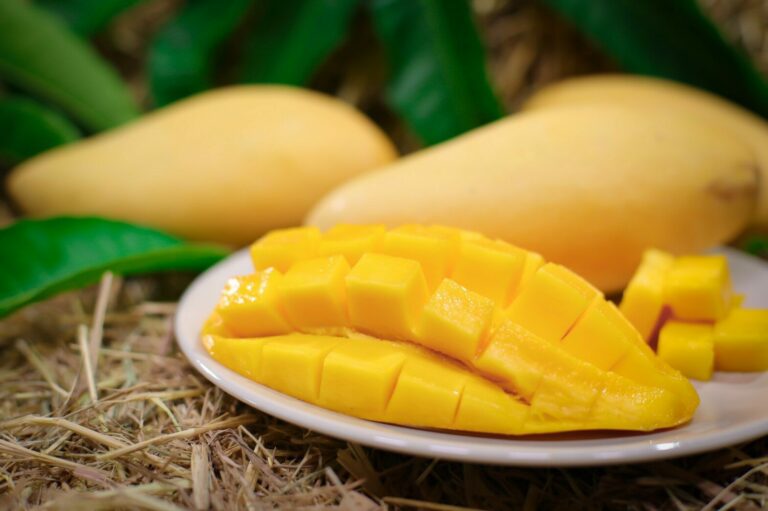
Nam Dok Mai Mango
(Photo Credit: technologychaoban)
- Rambutan (เงาะ)
The name rambutan is well-known for the hair-like features covering the red exterior of the fruit. With peak seasons in May, rambutans are usually eaten on hot days as the sweet white flesh of the rambutan is juicy, floral, and refreshing. The round shape of the rambutan is attributed to the big round seed in the core surrounded by white flesh.
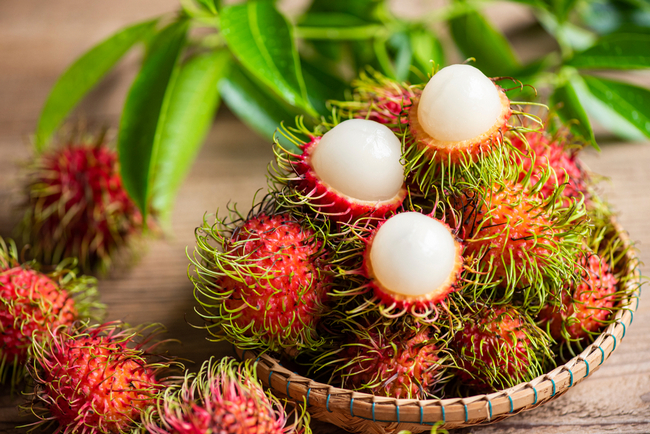
(Photo Credit: pobpad)
- Lychee (ลิ้นจี่)
Lychee is a tropical fruit that is usually harvested in April with a pale white flesh, not unlike that of the rambutan. Bearing a pink oval-shaped exterior, the lychee has a pit in the center in the shape of an almond. The flesh of the lychee is sweet and juicy, with a unique fragrance that makes the taste of this fruit distinctive. Lychee are usually used in desserts, juices, and even cocktails.
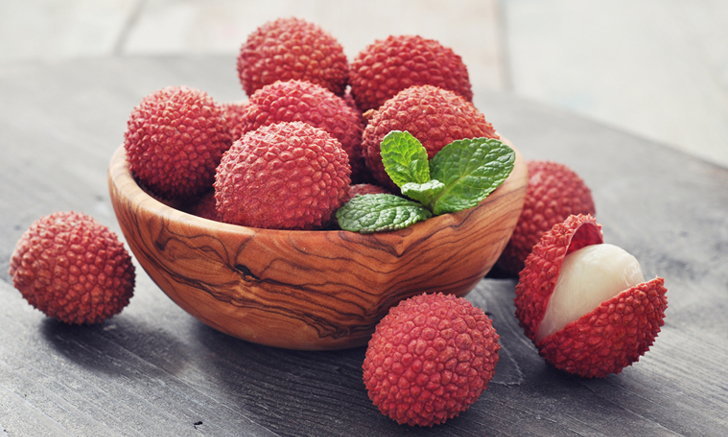
(Photo Credit: Sanook)
- Toddy Palm (ลูกตาล)
The toddy palm is a variety of palm trees that bears toddy palm fruits every February. Inside these fruits, there are hard round seeds surrounded by three segments of pale fleshy pulp. Upon eating, you may be surprised by the sweetness and agar-like texture that is both smooth and gelatinous. As a result of this jelly consistency, toddy palm fruits are typically used to make snacks and dessert ingredients, especially icy treats that are perfect for countering heat during the hot season.

(Photo Credit: Cookpad)
Rainy Season (Mid May- Mid October)
- Mangosteen (มังคุด)
Mangosteen is known as the “Queen of Fruits” and has a peak harvest in the rainy month of May. With a unique round purple exterior and a green stalk on top, the inside wall of the mangosteen is red, and the pulp is white. There are usually 7 to 8 fruit segments in each mangosteen, with one to two seeds. A mangosteen is usually consumed for its white pulp, which has a sharp tangy flavor that is slightly sweet. According to Thai traditional medicine, mangosteen is categorized as “cold” food and is consumed along with durian to counter the latter’s “hot” quality.
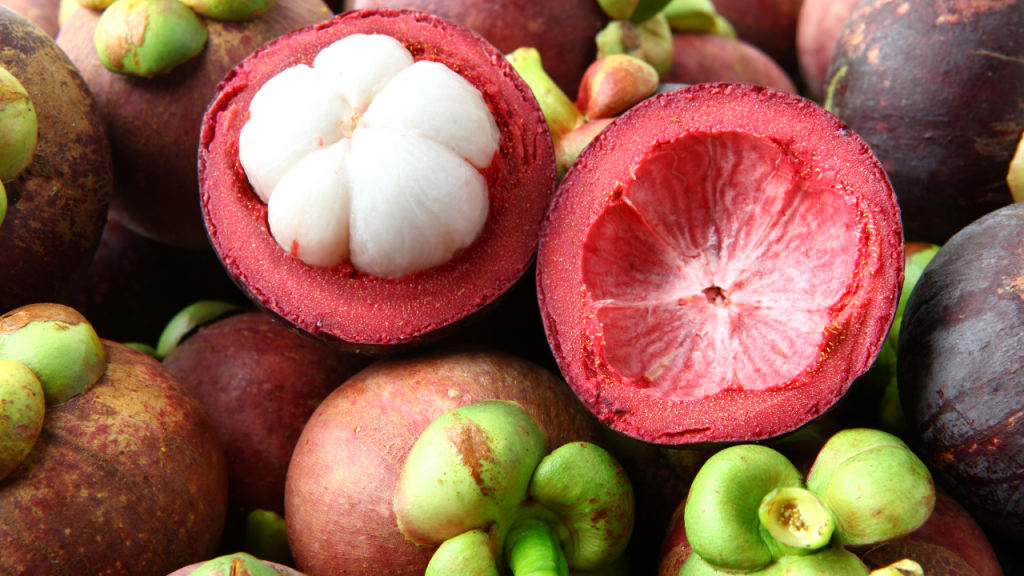
(Photo Credit: Thairat)
- Longan (ลำไย)
The word longan is derived from the Cantonese term for “dragon eye” for its appearance under a thin brown skin that looks like an eye. Pale translucent white flesh with a black round seed in the center, the longan indeed looks like an eye from afar but do not be deceived by the looks as this fruit is very sweet and juicy. Longans are bite-sized, making them very easy to eat, especially around August when longans are plentiful. Longan is categorized as “hot” food in Thai traditional medicine, and are thus consumed in moderation to prevent the body from overheating. The heat of the longan fruit, however, can help combat cold drizzles of the rainy season.
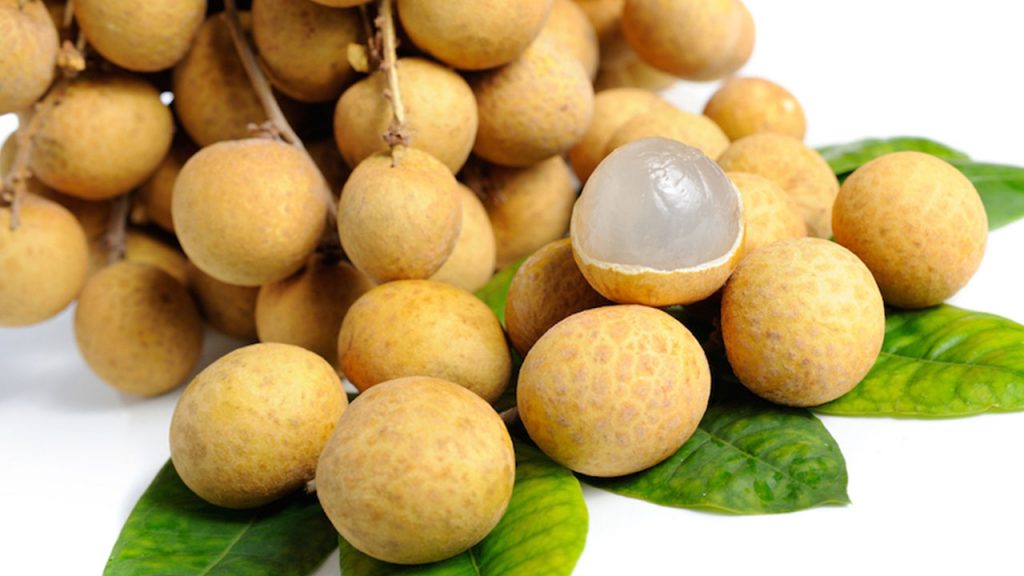
(Photo Credit: Thairat)
- Langsat (ลองกอง)
Langsats grow in big bunches at once and have an earthy brown exterior, similar to a potato. Typically, peak harvest happens in October for this fruit with a white translucent flesh underneath the skin. People often confuse the langsat with the longan due to their similar flesh color and texture. However, in terms of taste, the langsat may be closer to that of a pomelo than the longan, as it is juicy and thirst-quenching.
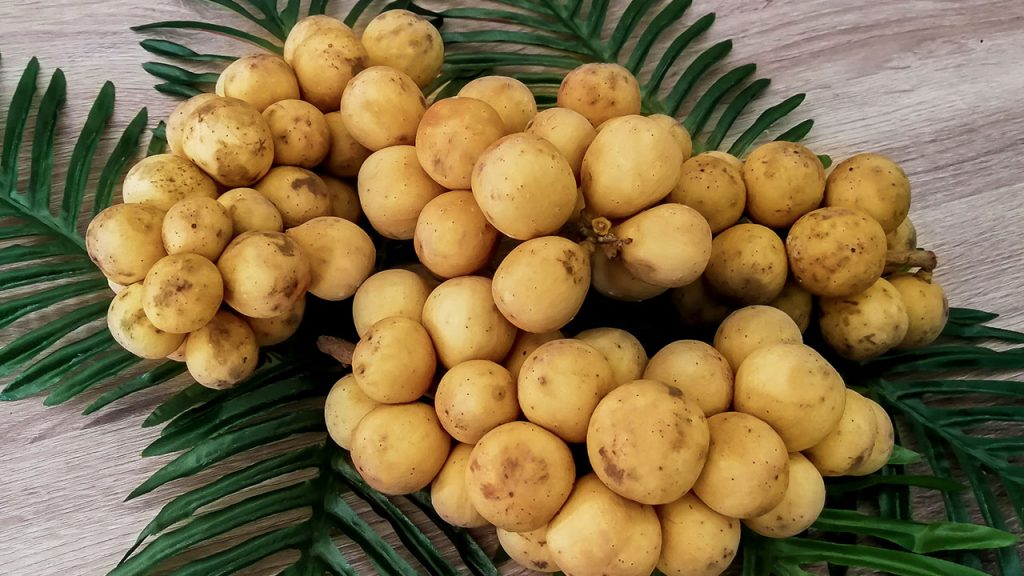
(Photo Credit: Thairat)
- Pomelo (ส้มโอ)
Pomelos are the biggest citrus fruits resembling a big green grapefruit, with a peak harvest in July. Under the zesty green skin, the inside of pomelo contains a light yellowish pulp similar to that of other citrus fruits like oranges and lemons. The taste of the pomelo pulp is tangy and sour but also contains notes of bitterness to balance the sourness. Thais also preserve pomelo rind in syrup before drying it in the sun to make candied rinds.
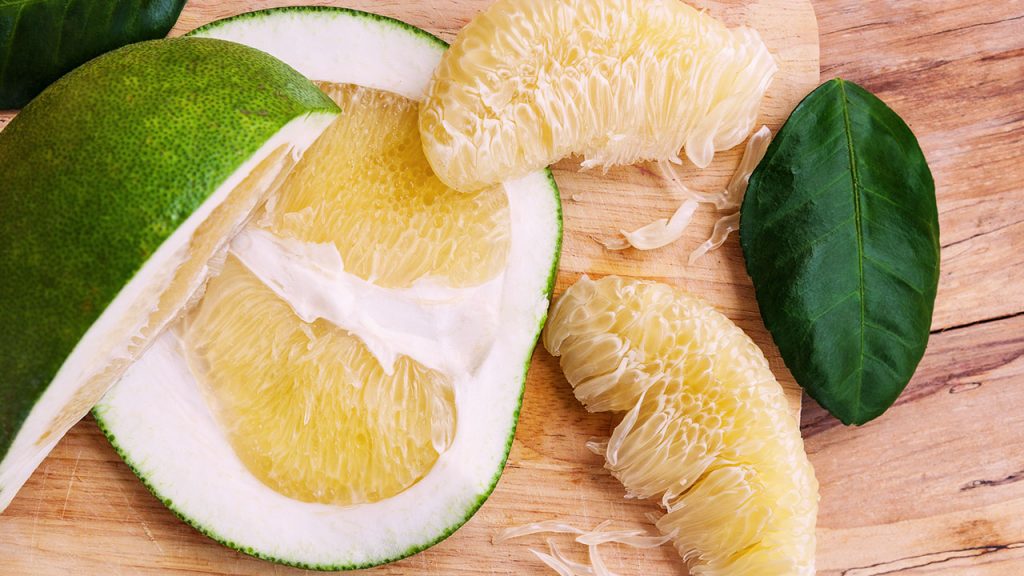
(Photo Credit: Thairat)
- Pineapple (สัปปะรด)
Pineapples are one of the most well-known tropical fruits, and in Thailand, they usually bear fruit during June. The most distinctive feature of pineapples is the spiky leaves protruding from the top with the diamond grid pattern all around the outside of the fruit. While most people who have tried to eat pineapples might remember the intense sour tangy taste, Thai pineapples can be really sweet depending on the region they are grown. Pineapples from Phuket are especially renowned for their sweet tastes.
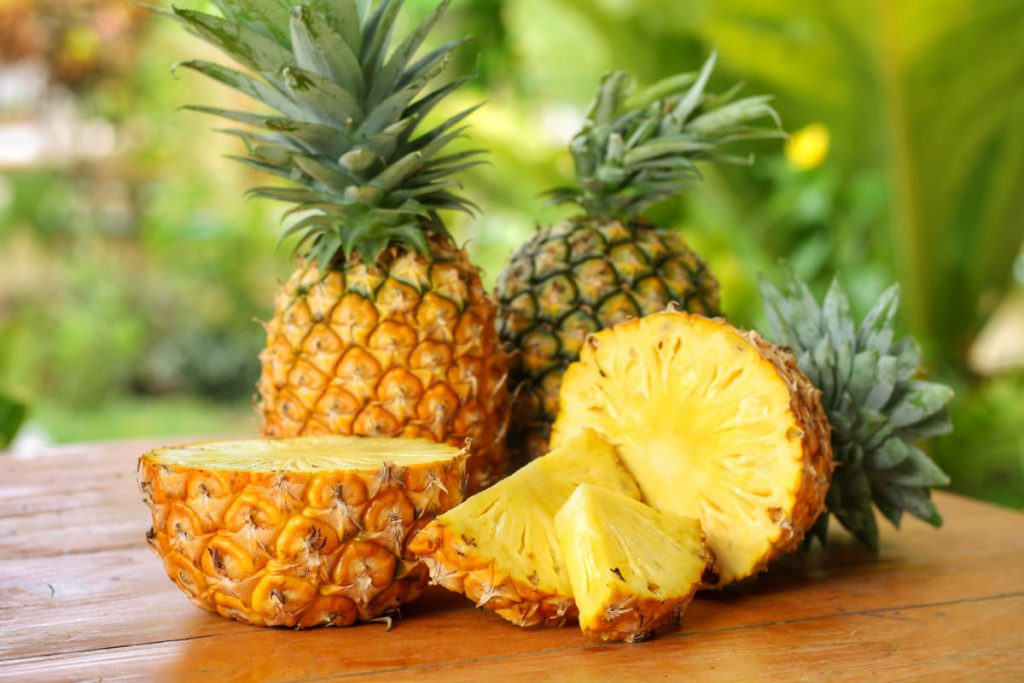
(Photo Credit: PANGpOnd)
Cold Season (Mid November – Mid February)
- Orange (ส้ม)
Thai oranges are just like any other oranges, except they have greenish-yellow skin. Like other oranges, Thai oranges bear fruit in the colder season, typically around November. Inside is bright orange flesh that can be separated into segments to be eaten. For those who don’t like to eat the pulp, you may simply suck out or squeeze out the juice to drink.
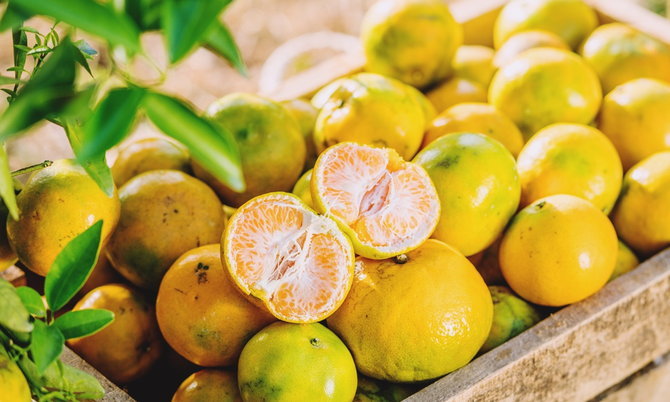
(Photo Credit: Sanook)
- Rose Apple (ชมพู่)
Rose apples are slightly oval fruits with a pear-like shape, sporting bright reddish-pink skin. With peak harvest in December, rose apples are really crunchy and light in texture with a fruity rosy flavor. The taste also brings up a subtle sweetness.
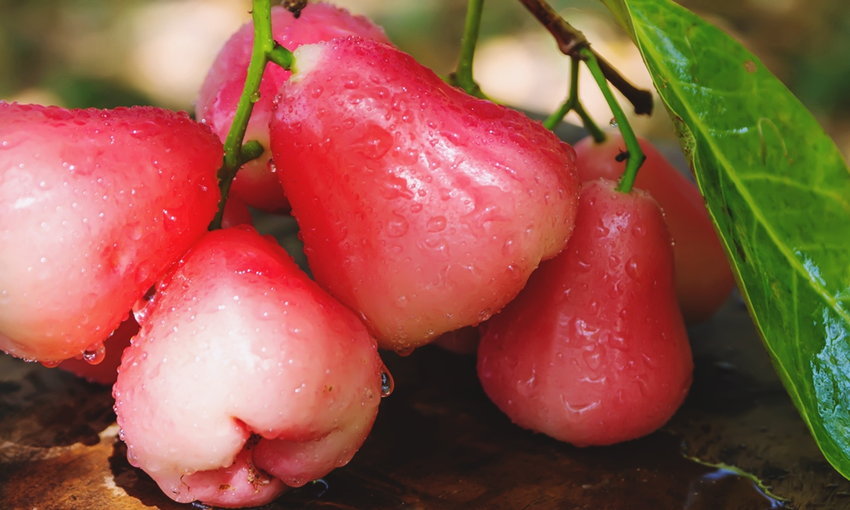
(Photo Credit: Sanook)
- Banana (กล้วย)
As native fruits of Thailand, bananas can be found throughout the landscape of the country but grows most abundantly during the colder months around February. With bright yellow skin and a soft yellow-white interior, bananas are exported and eaten around the world, but in Thailand, it is possible to have some fresh ones growing in your backyard. Banana leaves, though inedible, are used in Thai cooking as a form of food-serving utensil, while also possessing ritual significance.
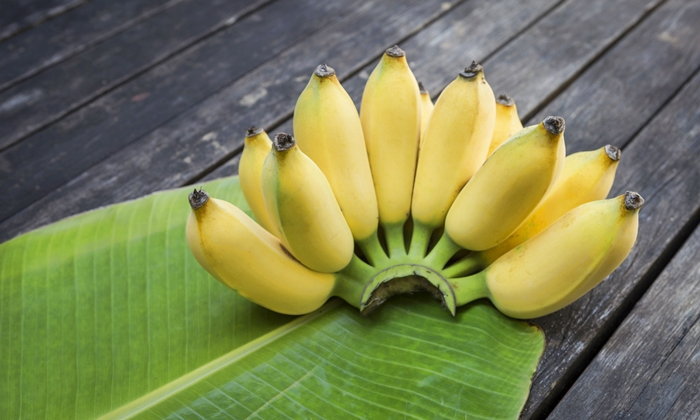
(Photo Credit: Sanook)
- Guava (ฝรั่ง)
Guavas are another tropical fruit that bears the most harvest in the colder months around January. While it has yellowish to light green skin, the color of the inside flesh varies by type and country of origin. In Thailand, guavas are typically white on the inside with yellow seeds. Upon ripening, guavas have a distinct smell that is very sharp and strong. As for the taste, you may find it quite sweet, depending on the season.

(Photo Credit: health kapook)
- Jujube (พุทรา)
Jujubes, also known as red dates, are small round fruits with a seed pit in the center. When jujubes are ripe, typically in the early months of the year around January, the skin becomes a dark red, and many wrinkles start to form on the surface. It is common for jujubes to be dried and preserved due to their sweet, almost candy-like taste. Amongst Thai Chinese people, jujubes are often a popular ingredient for various types of herbal medicines.
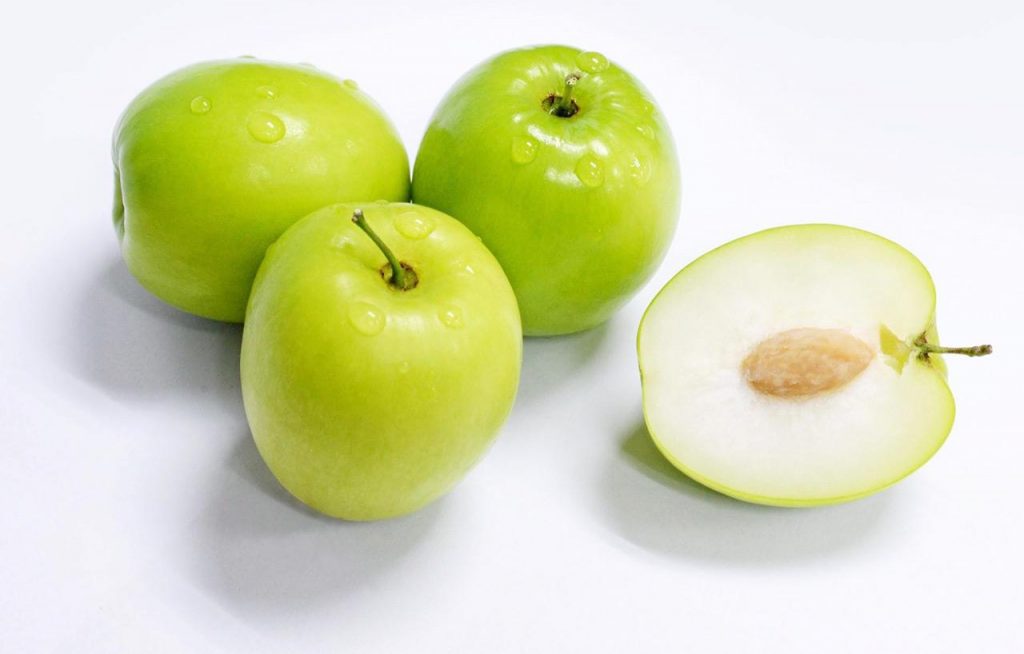
(Photo Credit: Thairat)
Fruits by Region
Besides categorizing fruits according to their seasons, the origins of the fruits also play an important role in the decision of the consumers whether to buy or not. This is because each region produces fruits that taste distinguishably different and has geographical features that favor certain types of fruits. Additionally, to enhance the high quality of fruits, each area also has its traditional way in perfecting the fruits we have in the market today. Therefore, specific places have even developed a reputation for their products. Just like cheese and wine, Thai fruits can be divided into different grades. Some regions are known for a particular fruit, like how particular regions are known for their wine.
Now, let’s take a deep look at which provinces are known for which fruits, what their characteristics are and how to distinguish them.
- Durian (ทุเรียน)
Durian might not be everyone’s cup of tea, but many are willing to pay for premium durian as much as 10,000 baht, especially from Nonthaburi province! Located in the Northwest of Bangkok, Nonthaburi is rich with loamy soil perfect for drainage. Hot tropical weather also allows farmers to grow the best quality of durian with a thin shell and a heavenly taste that would melt in your mouth. One ultimate tip of growing durian is to have soil embankment to prevent its roots from rotting.
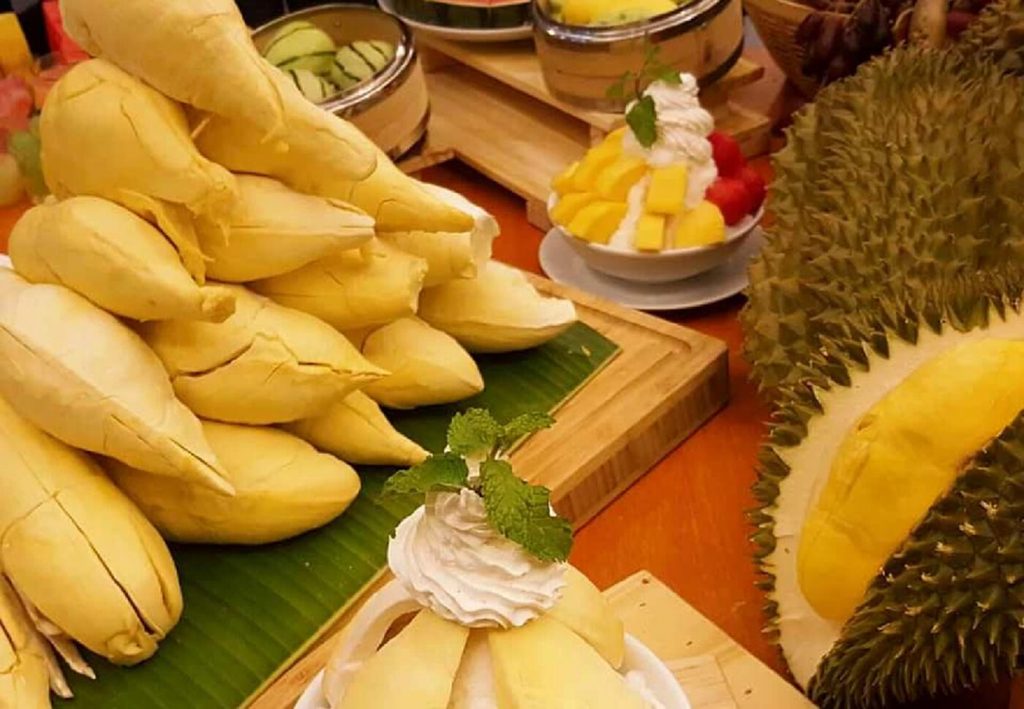
(Photo Credit: กรุงเทพธุรกิจ)
- Custard apple (น้อยหน่า)
Grown in a tropical climate, custard apples are sweet and have rough, scaly green skin with a creamy texture on the inside. Custard apple or sugar apple can be found in many areas of Thailand but are produced at a large scale in Nakhon Ratchasima province, Northeastern region of Thailand. Although the custard apple is adaptive to all sorts of soil, it thrives better when cultivated in loam mixed with sand, as the soil does not hold too much water. Custard apples are also very tolerant of hot weather.
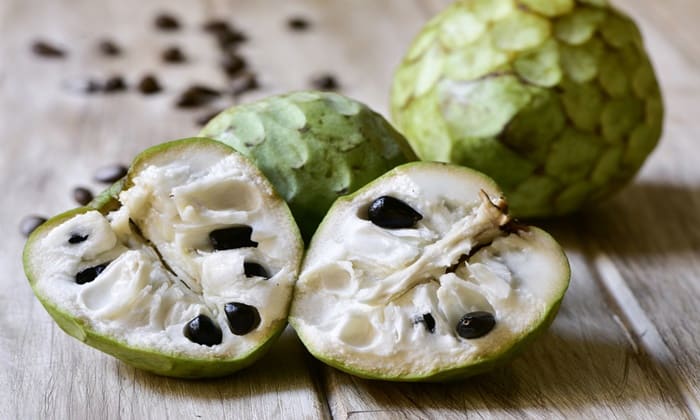
(Photo Credit: hellokhunmor)
- Tamarind (มะขาม)
With a light brown shell on the outside and dark brown on the inside, tamarind possesses varying tastes from sweet to sour and from tangy to tart. While Tamarind can be grown in various parts of Thailand, we must admit that no one can trumps Phetchabun province for its ability to produce the sweetest tamarind in Thailand. This is because the soil in Phetchabun is loamy and filled with potassium. Moreover, the mountainous landscape as well as its dry and hot climate facilitates the growing of tamarind.
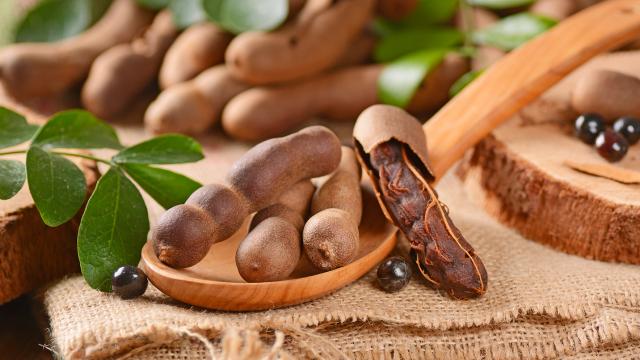
(Photo Credit: Thairat)
- Marian Plum or Plango (มะยงชิด)
Marian Plum, plango, or mayong-chit, call it as you like, is a small, mango-like fruit. While its color and texture are similar to mango, it tastes not only sweet like a plum but also a bit sour. Thais know that the best plango you can find is from Nakhon Nayok province. Located in the Eastern region of Thailand, Nakohn Nayok is filled with mountains, large areas of plains that are a bit southward tilted. This results in sediment accumulations. Thus, its soil is a combination of clay, sand, and gravel, which is good for maintaining water. Equipped with hot and cold climates, Nakhon Nayok is able to produce good-sized, sweet, palatable plango today.
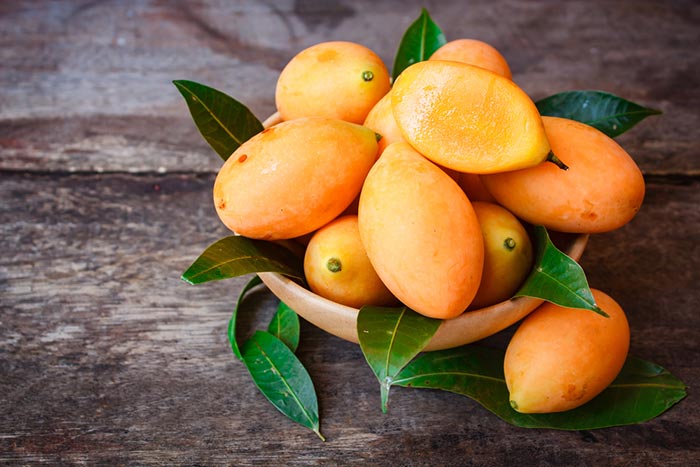
(Photo Credit: Health Kapook)
- Lychee (ลิ้นจี่)
Where to better find a large, oval, red-pinkish skin Lychee if not from Nakhon Phanom province! To produce white, almost translucent flesh and sweet and sour flavor lychee, Nakhon Phanom farmers require its nature-given loam mixed with gravel. Moreover, as it is located in a plain area on the banks of the Mekong River, the climate is hot in summer and cold in winter, facilitating farmers to produce the best lychee in Thailand.
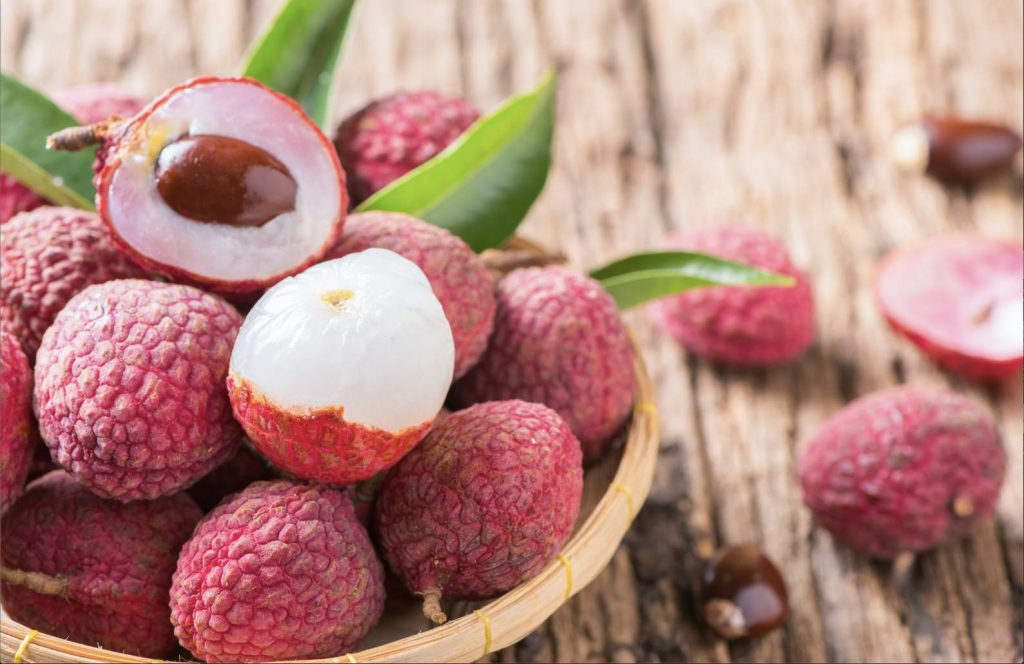
(Photo Credit: zujipuli)
- Santol (กระท้อน)
Santol or what one might know as cotton fruit has yellow-brownish velvet skin. The inside is sweet white cotton seeds. While we generally eat the cotton white part, the flesh inside can be cooked into dessert or dishes like papaya salad. Its best harvest comes from Nonthaburi province, which is known for its fruit plantation and fertile alluvial soil. This is the perfect soil for growing fruit-bearing trees. The weather in Nonthaburi is also stable all year, which guarantees fresh produce limitlessly.
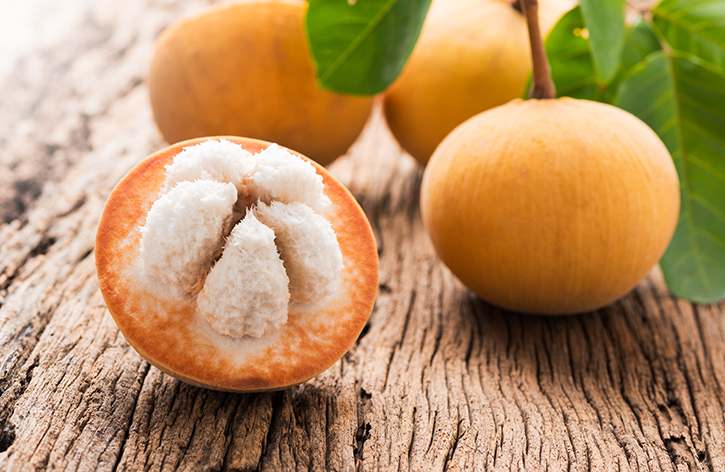
(Photo Credit: gourmet and cuisine)
- Sapodilla (ละมุด)
Sapodilla or naseberry is also an oval shape with brown skin both inside and outside. It has a pleasant smell and tastes sweet like plum. One of the popular sapodillas is from Banmai, a sub-district of Ayutthaya province. Located in the central region of Thailand, Ayutthaya has its geographical advantages as there are many rivers with fertile soils, which are crucial for growing sapodillas.
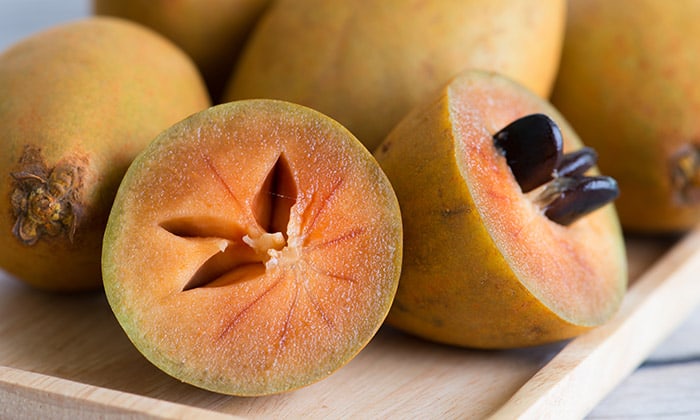
(Photo Credit: hellokhunmor)
- Chempedak/Cempedak (จำปาดะ)
Chempedak is often mistaken for jackfruit. It is different, but it is very similar to jackfruit except that it is smaller, and the flesh is smoother and has a darker yellow and juicer when ripe. The pulp is sweet and fragrant. While other fruits may be available all year-round, jackfruits are only available in the rainy season and are grown in Satun province. Situated in the mountainous area in the South, which is filled with rainfall almost all year, the soil is loam and naturally fertilized, perfect for cultivating chempedak.
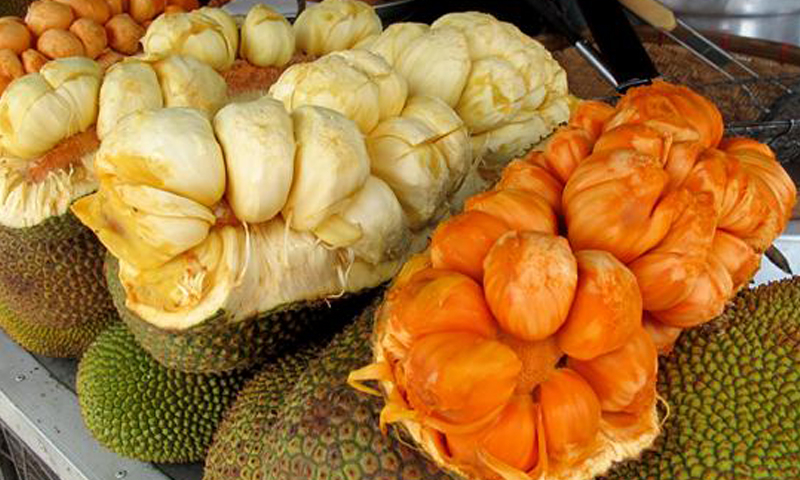
(Photo Credit: Thairat)
Conclusion
You have made it to the end of this article! Congratulations on your success in completing an ultimate guide to seasonal fruits! Although this may only be a snippet of all Thai fruits, I hope you are more familiar with these fruits cultivated in different regions of Thailand. On another note, despite the abundance of fruits in Thailand, we should not take fruits for granted. For Thais, fruits are not just commodities but are essentially a part of the Thai way of life. As an agricultural country, Thai fruits represent a legacy of agricultural ingenuity that is close to and respectful of nature. Thai fruits should be appreciated the same way European wine and cheese are appreciated!
The story of “seasonal Thai fruits” is another mouth-watering aspect of Thai culture and heritage. We saw how agricultural wisdom and way of life reflect the value of respect for nature. This characteristic of respectfulness is a key component of the essence of Thainess. Join us in exploring more stories of Thailand and the Thai people, as we take you on a journey to discover Thainess.
Sources:
- https://food.trueid.net/detail/jBlr9zVk3Wxb
- https://news.mthai.com/economy-news/568006.html
- https://www.altv.tv/content/altv-news/614c91faf3a5e8670b38a13d
- https://www.nationsonline.org/oneworld/map/thailand-region-map.htm
- https://cooking.kapook.com/view225930.html
- http://blog.arda.or.th/%E0%B8%99%E0%B9%89%E0%B8%AD%E0%B8%A2%E0%B8%AB%E0%B8%99%E0%B9%88%E0%B8%B2/
- https://www.technologychaoban.com/bullet-news-today/article_102812
______________________________________________________________________________________________________________________________
Author: Pattanun Arunpreechawat
28 February 2023


